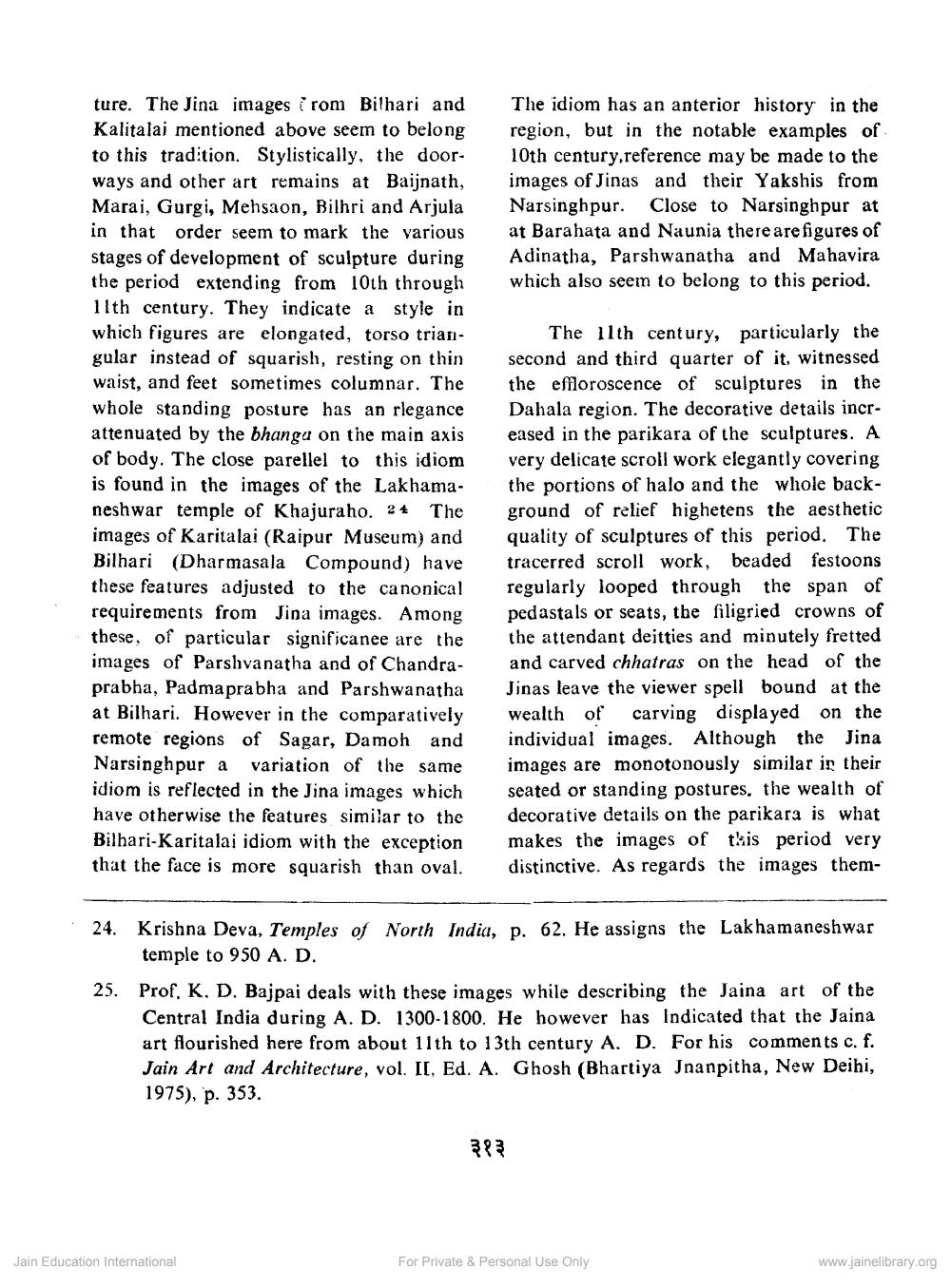________________
ture. The Jina images rom Bilhari and Kalitalai mentioned above seem to belong to this tradition. Stylistically, the doorways and other art remains at Baijnath, Marai, Gurgi, Mehsaon, Bilhri and Arjula in that order seem to mark the various stages of development of sculpture during the period extending from 10th through 11th century. They indicate a style in which figures are elongated, torso triangular instead of squarish, resting on thin waist, and feet sometimes columnar. The whole standing posture has an rlegance attenuated by the bhanga on the main axis of body. The close parellel to this idiom is found in the images of the Lakhamaneshwar temple of Khajuraho. 24 The images of Karitalai (Raipur Museum) and Bilhari (Dharmasala Compound) have these features adjusted to the canonical requirements from Jina images. Among these, of particular significance are the images of Parshvanatha and of Chandraprabha, Padmaprabha and Parshwanatha at Bilhari. However in the comparatively remote regions of Sagar, Damoh and Narsinghpur a variation of the same idiom is reflected in the Jina images which have otherwise the features similar to the Bilhari-Karitalai idiom with the exception that the face is more squarish than oval.
The idiom has an anterior history in the region, but in the notable examples of 10th century,reference may be made to the images of Jinas and their Yakshis from Narsinghpur. Close to Narsinghpur at at Barahata and Naunia there are figures of Adinatha, Parshwanatha and Mahavira which also seem to belong to this period.
The 11th century, particularly the second and third quarter of it, witnessed the effloroscence of sculptures in the Dahala region. The decorative details increased in the parikara of the sculptures. A very delicate scroll work elegantly covering the portions of halo and the whole background of relief highetens the aesthetic. quality of sculptures of this period. The tracerred scroll work, beaded festoons regularly looped through the span of pedastals or seats, the filigried crowns of the attendant deitties and minutely fretted and carved chhatras on the head of the Jinas leave the viewer spell bound at the wealth of carving displayed on the individual images. Although the Jina images are monotonously similar in their seated or standing postures, the wealth of decorative details on the parikara is what makes the images of this period very distinctive. As regards the images them
24. Krishna Deva. Temples of North India, p. 62. He assigns the Lakhamaneshwar temple to 950 A. D.
Jain Education International
25. Prof, K. D. Bajpai deals with these images while describing the Jaina art of the Central India during A. D. 1300-1800. He however has Indicated that the Jaina. art flourished here from about 11th to 13th century A. D. For his comments c. f. Jain Art and Architecture, vol. II. Ed. A. Ghosh (Bhartiya Jnanpitha, New Delhi, 1975), p. 353.
३१३
For Private & Personal Use Only
www.jainelibrary.org




